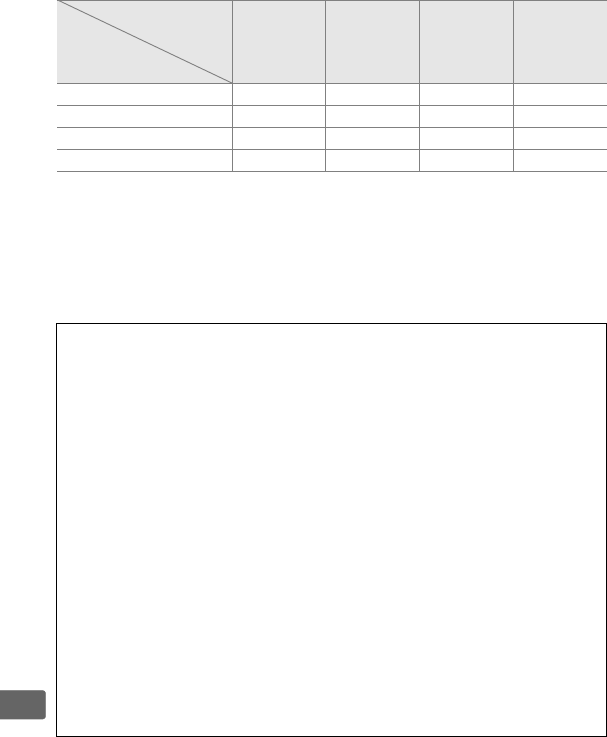
350
n
Other Flash Units
The following flash units can be used in non-TTL auto and manual
modes. If they are set to TTL, the camera shutter-release button
will lock and no photographs can be taken.
Flash unit SB-80DX,
SB-28DX,
SB-28, SB-26,
SB-25, SB-24
SB-50DX
SB-30, SB-27
1
,
SB-22S, SB-22,
SB-20,
SB-16B, SB-15
SB-23, SB-29
2
,
SB-21B
2
,
SB-29S
2
Flash mode
A Non-TTL auto ✔ — ✔ —
M Manual ✔✔✔✔
G Repeating flash ✔ ———
REAR Rear-curtain sync ✔✔✔✔
1 Flash mode is automatically set to TTL and shutter-release is disabled. Set flash
unit to A (non-TTL auto flash).
2 Autofocus is only available with AF-Micro lenses (60 mm, 105 mm, or 200 mm).
D Notes on Optional Flash Units
Refer to the flash unit manual for detailed instructions.
If the unit
supports CLS, refer to the section on CLS-compatible digital SLR
cameras.
The D300S is not included in the “digital SLR” category in the
SB-80DX, SB-28DX, and SB-50DX manuals.
i-TTL flash control can be used at ISO sensitivities between 200 and 3200.
At values over 3200, the desired results may not be achieved at some
ranges or aperture settings. If the flash-ready indicator blinks for about
three seconds after a photograph is taken, the flash has fired at full
power and the photograph may be underexposed.
When an SC-series 17, 28, or 29 sync cable is used for off-camera flash
photography, correct exposure may not be achieved in i-TTL mode.
We
recommend that you select standard i-TTL flash control.
Take a test shot
and view the results in the monitor.
In i-TTL, use the flash panel or bounce adapter provided with the flash
unit.
Do not use other panels such as diffusion panels, as this may
produce incorrect exposure.


















